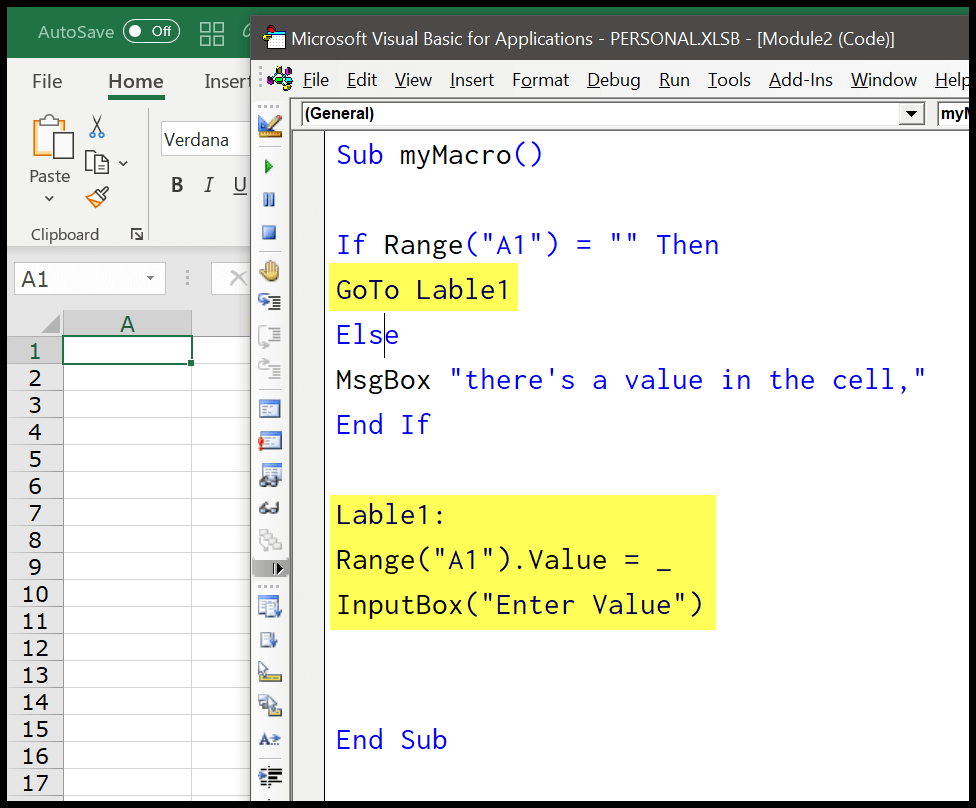If or Else If: The Ultimate Guide

Welcome to the ultimate guide on one of the most fundamental concepts in programming: the if-else if statements. These conditional constructs are the building blocks of decision-making in code, allowing developers to create dynamic and interactive applications. In this comprehensive article, we will delve deep into the world of if-else if statements, exploring their syntax, usage, best practices, and advanced techniques. By the end of this guide, you'll have a thorough understanding of how to leverage these powerful constructs to write efficient and robust code.
Understanding the If-Else If Construct

At its core, the if-else if statement is a conditional block that enables programmers to execute specific code based on different conditions. It allows for a series of tests to be performed, with corresponding actions being triggered when a condition is met. This construct is widely used in various programming languages, including C, C++, Java, Python, and many others.
The basic syntax of an if statement is as follows:
if (condition) {
// code to be executed if the condition is true
}
Here, "condition" represents a logical expression that evaluates to either true or false. If the condition is true, the code inside the if block will be executed. If the condition is false, the code will simply move to the next statement after the if block.
However, often we need to handle multiple conditions and their respective outcomes. This is where the else if statement comes into play. The else if construct allows us to chain multiple conditions together, evaluating each condition sequentially until one is met.
The syntax for an else if statement is as follows:
if (condition1) {
// code to be executed if condition1 is true
} else if (condition2) {
// code to be executed if condition1 is false and condition2 is true
} else if (condition3) {
// code to be executed if condition1 and condition2 are false, but condition3 is true
}
In this example, the code will first evaluate condition1. If it is true, the corresponding code will be executed, and the program will proceed to the next statement. If condition1 is false, the code will then evaluate condition2, and so on. This chaining of conditions allows for flexible and precise control flow in our programs.
Using If-Else If in Real-World Scenarios
To illustrate the practical application of if-else if statements, let’s consider a simple example. Imagine we are building a game where a player’s health can be increased or decreased based on certain actions. We can use if-else if statements to determine the outcome of these actions.
int health = 100; // Initial health
if (health <= 0) {
// Player has no health left, game over
System.out.println("Game Over!");
} else if (health >= 90) {
// Health is above 90, player is in good shape
System.out.println("You're doing great! Keep it up!");
} else if (health >= 50) {
// Health is between 50 and 90, player is slightly injured
System.out.println("Ouch! You took some damage. Take a break and recover.");
} else {
// Health is below 50, player is in critical condition
System.out.println("Critical! You need immediate healing!");
}
In this scenario, we are evaluating the player's health and providing appropriate feedback based on different conditions. The if statement checks if the health is less than or equal to 0, indicating a game over scenario. If the health is above 0, we move to the else if statements, where we can provide different messages based on the player's health range.
Best Practices and Considerations

When working with if-else if statements, it’s important to follow some best practices to ensure clean and maintainable code. Here are some key considerations:
- Avoid Excessive Nesting: While nesting if-else if statements can be useful, excessive nesting can make code difficult to read and maintain. Try to keep the structure as flat as possible by breaking down complex conditions into simpler ones.
- Use Meaningful Condition Names: When defining conditions, choose descriptive and meaningful names. This helps improve code readability and makes it easier for other developers (or even yourself in the future) to understand the purpose of each condition.
- Consider Early Returns: If you have a series of conditions that need to be evaluated sequentially, consider using early returns. This means that if a condition is met, you can immediately return a value or exit the function, avoiding the need to evaluate further conditions.
- Avoid Redundant Else If Blocks: Be cautious of adding redundant else if blocks that cover the same range of values as the previous ones. This can lead to unexpected behavior and make your code harder to debug.
- Use Logical Operators Wisely: Logical operators such as AND (&&) and OR (||) can be powerful tools for combining conditions. However, misuse of these operators can lead to complex and hard-to-debug code. Always ensure you understand the logical implications of these operators before using them.
Performance Implications
The performance of if-else if statements largely depends on the complexity of the conditions and the number of blocks involved. In general, the more conditions and blocks you have, the more computational resources are required to evaluate them. However, modern compilers and interpreters are quite efficient at optimizing these constructs, so performance impact is often negligible unless you’re dealing with extremely complex scenarios.
One way to optimize performance is to ensure that the most common conditions are evaluated first. This can reduce the number of evaluations required, especially in scenarios where a particular condition is more likely to be met than others.
Advanced Techniques and Patterns
While the basic if-else if construct is powerful, there are advanced techniques and patterns that can further enhance your programming skills. Let’s explore some of these techniques:
Switch Case Statements
In some programming languages, switch case statements provide an alternative to if-else if constructs for handling multiple conditions. Switch case statements allow you to compare a variable against a set of values and execute code based on the matching case.
The syntax for a switch statement is as follows:
switch (expression) {
case value1:
// code to be executed if expression matches value1
break;
case value2:
// code to be executed if expression matches value2
break;
default:
// code to be executed if no case matches
}
The switch statement evaluates the expression and matches it against the case values. If a match is found, the corresponding code is executed, and the break statement ensures that the program exits the switch block. If no match is found, the default case is executed.
Switch case statements can be particularly useful when dealing with a large number of discrete values or when the conditions are mutually exclusive.
Ternary Operator
The ternary operator is a concise way to write if-else statements in a single line. It is often used when the conditions and their outcomes are relatively simple. The syntax of the ternary operator is as follows:
variable = condition ? valueIfTrue : valueIfFalse;
Here, condition is a logical expression that evaluates to either true or false. If the condition is true, valueIfTrue is assigned to variable. If the condition is false, valueIfFalse is assigned. This operator is especially useful for simple assignments where the condition and its outcomes are clear.
Higher-Order Functions and Conditionals
In functional programming paradigms, higher-order functions and conditionals are used to handle complex logic. These concepts allow for the abstraction and composition of conditional logic, making code more modular and reusable.
For example, in JavaScript, you can use the map function to apply a conditional logic to each element of an array. This can be particularly useful when you need to perform different actions based on the value of each element.
const array = [1, 2, 3, 4, 5]; const result = array.map(num => num % 2 === 0 ? "Even" : "Odd"); console.log(result); // Output: ["Odd", "Even", "Odd", "Even", "Odd"]
In this example, the map function applies a conditional logic to each element of the array, checking if it is even or odd, and returning the corresponding string.
Conclusion
The if-else if construct is a fundamental tool in any programmer’s toolkit, allowing for dynamic and interactive code. By understanding the syntax, best practices, and advanced techniques, you can write efficient and robust code that handles complex conditions with ease. Whether you’re a beginner or an experienced developer, mastering if-else if statements is a crucial step in becoming a proficient programmer.
FAQ

What is the difference between if-else if and switch case statements?
+
If-else if statements are used to evaluate a series of conditions sequentially, executing code based on the first condition that is met. Switch case statements, on the other hand, are used to compare a variable against a set of values and execute code based on the matching case. Switch case statements are more suitable for handling discrete values or mutually exclusive conditions.
Can I use if-else if statements in functional programming paradigms?
+
Yes, if-else if statements can be used in functional programming paradigms, but it’s important to follow functional programming principles. In functional programming, you would typically avoid side effects and mutable state, and instead use higher-order functions and conditionals to abstract and compose conditional logic.
How can I optimize the performance of if-else if statements?
+
To optimize the performance of if-else if statements, ensure that the most common conditions are evaluated first. This reduces the number of evaluations required. Additionally, avoid excessive nesting and use logical operators wisely to combine conditions efficiently.



